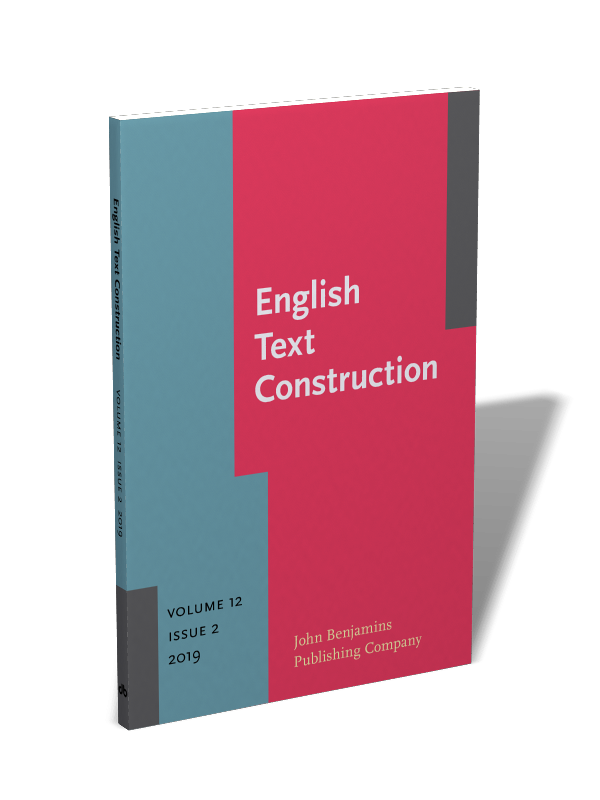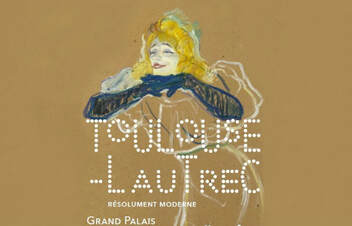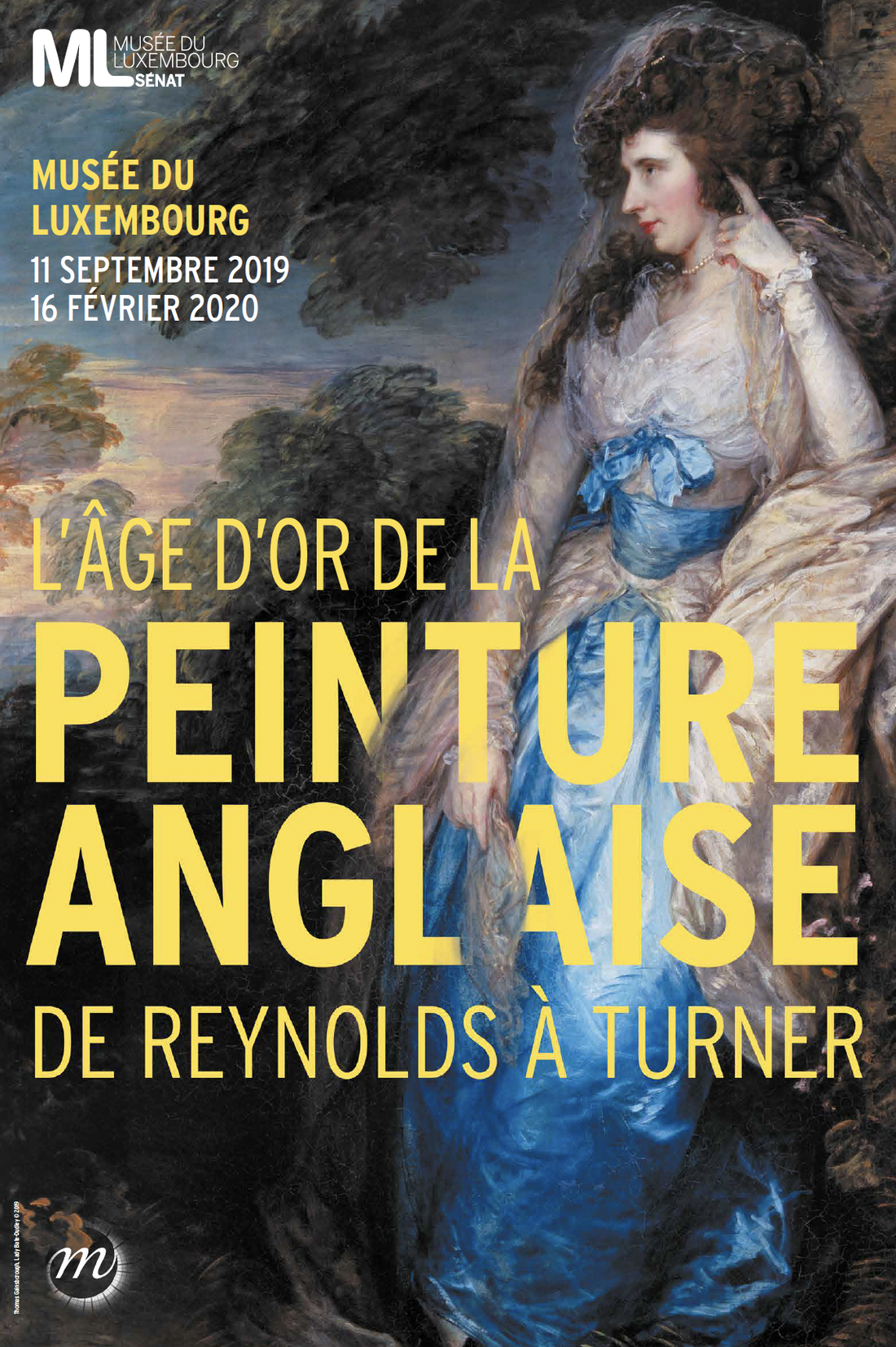|
Like many university teachers, I have had to switch to online teaching during the COVID-19 pandemic. As part of this endeavour, in the rare moments that I was not surrounded by my children, I recorded a few of the lectures that I teach as part of the BA1 course History of the Western Arts 4: 1945–present. In the first lecture, students are introduced to the development of contemporary literature in general. The lecture refers to the work of Simone de Beauvoir, whose importance for the present is emphasized by Kate Kirkpatrick’s recent biography. In the second lecture we explore the intersection of literature and existentialism. To see how Kierkegaard’s ideas return in contemporary films, consider this fragment from the film Margin Call (2011). The following clip from Bojack Horseman provides a good illustration of the ideas of Sartre. In the lecture, I also consider Paul Celan's 'Todesfuge'. You might want to hear the way in which Celan himself reads this haunting poem. Celan's reading begins slowly, but the rhythm gradually increases, (possibly) securing a mesmerizing effect.
0 Comments
A couple of weeks ago, I had the good fortune of spending two days in the city of light. Following professional as well as personal inclinations, I visited three exhibitions, which were strikingly different in size, organization, and ambition – different to such an extent, indeed, that only the chilly and surly demeanor of the porters at the entrance reminded me of their shared setting in Paris. In the following remarks, I would like to briefly reflect on these exhibitions so as to ponder the ways in which exhibitions shape our understanding of art, often in paradoxical ways.
The exhibition explores the many intersections between Toulouse-Lautrec’s work and that of his contemporaries. In the very first space, for instance, his work is compared to that of his teacher, Fernand Cormon, a historical painter. Seeing Cormon’s tableaux, the viewer is faced with a view of history that is marked not by the progress of civilization but by barbarity. This notion illuminates the art of Toulouse-Lautrec, in which supposedly civilized life is stripped of its veneer, so as to show the animality that lurks beneath. More recognizable points of reference, such as Degas and van Gogh, are present as well. Like these artists, Toulouse-Lautrec is one of the painters of modern urban life, and its seedy side in particular; his art has been pigeonholed as decadent or, less charitably, degenerate – a view that was reinforced by his physical disability and his bohemian lifestyle (at the exhibition, one learns that Toulouse-Lautrec sometimes stayed in brothels for weeks on end). As such, Toulouse-Lautrec’s work questions the distinction between high art (culture for the elite) and low art (culture for mass-consumption) that was so characteristic of his own time. On the one hand, his works did not result in financial gain, but were appreciated an bought by people belonging to his inner circle. On the other hand, he took ‘vulgar’ culture as his subject, which may lead one to infer that his works were meant as an appeal to popular taste. In other words, Toulouse-Lautrec tried to have his cake and eat it. Yet, in the long run, his approach was successful, as this exhibition shows: a huge portion of his work is now displayed in the Grand Palais, a cultural epicentre, in an exhibition that spans three floors. The exhibition is so vast that as one proceeds, one begins to believe that it will never end. The story that the exhibition tells, then, is different from the effect that it achieves: while the exhibition explores the local and particular qualities of this marginal artist, it at the same time sanctifies this art as being of universal and everlasting value. My own feeling, on leaving the exhibition, was that, perhaps, Toulouse-Lautrec’s work was too popular, too vulgar, and that this excessive vulgarity (which I here use in the qualitative and not the evaluative sense of the word) was what has made these works so prestigious in the long run.
In the case of The Alana Collection: Masterpieces of Italian Painting, however, I was lost. And this was unexpected, for there is a strong synergy between the exhibition and the museum’s permanent collection, which has a focus on medieaval and early modern works of art: an introductory film nicely highlights the many echoes that are thus created. No, I think I felt lost not because of my inability to understand the works in themselves, but because of their presentation. The exhibition’s title already points to nature of the problem: whereas in the case of Désirs & Volupté the name of the collector was willing to share his collection with the wider public was hidden in the text itself, in the case of The Alana Collection, their names were emphatically present. The exhibition is in many ways a tribute to their willingness to share their works with the wider public. The first room of the exhibition tries to replicate the benefactors’ living room, where their paintings vie for space. While the effort is an interesting one, its purpose is all too obvious, and the result makes it difficult to examine and scrutinize the actual works. Even more, the exhibition even features a rather hastily taken photograph of their living quarters, so that viewers can fully appreciate these works’ contemporary location.
As a result, the actual paintings get short shrift, even though these are magnificent. What the visitor remembers is the name of the collectors, but perhaps not in the way that the collectors envisioned. This is not meant as a jibe: without the efforts of private collectors such as Alvaro Saieh and Ana Guzmán, the art world would not be able to function in the way that it does, and it is their good right to ask that their willingness to share their passion with the world be acknowledged and recognized. What I want to highlight is another paradoxical effect: if one so openly asks for recognition, as in the present exhibition, the opposite effect is achieved. To be truly successful, an exhibition should let the collection speak for itself; only thus will the interested viewer fully appreciate the care that the collectors have taken, and be willing to recognize as benefactors, in the full sense of the word. I am aware of the irony that, of course, by addressing this issue, I have paid the collectors the compliment of talking about them rather than their collection.
One particular surprise, for me, was the inclusion of John Martin’s The Destruction of Pompeii and Herculaneum (1822), which is the final painting, to be seen when one leaves the exhibition. I will readily confess that I did not know this work. Martin’s work has only quite recently been revalued: while his sublime historical tableaux were very popular in the early nineteenth century, his work was considered too dramatic and excessive for Victorian tastes. But it was not the innate qualities of this painting that struck me; nor was I reminded of the nineteenth-century preoccupation with antiquity, which is one of my own research interests. The first thing that came to mind – my mind, at least – was the album cover of ‘Sweet Apocalypse’, a beautiful collection of haunting melodies by the contemporary German pianist Lambert, who always performs while wearing a Sardinian mask. This album’s cover is a painting by Mioke and shows the musician walking with a child towards an eruption of light, whose source remains unknown (but given the album’s title, it appears most sinister).
There is of course a striking difference: whereas in Martin’s painting the citizens of Pompeii attempt to flee the apocalypse behind them, in Mioke’s painting two individuals calmly walk towards it. At the end of this wonderful exhibition in the musée du Luxembourg, then, with the crème-de-la-crème of British painting behind me, I saw an artwork by a (for me) unknown artist, which made me think of the painting of the cover of an album by a pianist who performs anonymously, but whose music thus, paradoxically, is reaching an ever-growing audience. Whether Lambert and Mioke are consciously referring to Martin’s painting, I cannot say; intertextuality may work in mysterious ways, as theorists such as Julia Kristeva and Roland Barthes have shown. What I can say, is that in our times anonymity may be a better guarantee for creating forms of imaginative engagement.
The editors at Edinburgh University Press have kindly given me permission to upload the Introduction to The Edinburgh Companion to Anthony Trollope, which I edited with David Skilton and Ortwin de Graef. This text discusses the different contributions, situates them in the context of Trollope criticism and Victorian Studies, and positions the Companion in the context of the state of the discipline.
On the topic of geography: Pamplona and surroundings are stunning. Above is a picture of the gate through which pilgrims on the way to Santiago de Compostela enter the city. I followed the trail as it winds it way through this green town, and discovered some of the beautiful parks and gardens, of which the citadel (La Ciudadela), with the remnants of the old fortifications, is particularly impressive. The University of Navarra, at which the conference was held, is situated in a beautifully crafted landscape that begins to blend with the surrounding hills. The university even has its own museum of contemporary art. The permanent collection features works such as El número y las aguas I by Pablo Palazuelo in which numerological principles seem to result in an incoherent array of capricious lines that viewed from a distance begin to conjure up a variety of figures, and Composició ama cistella by Antoni Tàpies, a sculpture that appears to be made out of cardboard but that is actually bronze, in which the play with materiality and signification is very, very intriguing. We were very fortunate that there were also two wonderful temporary exhibitions, Small Data Lab by Daniel Canogar (a wonderful and light-hearted play with light and old or discarded bits of technology) and El No Returno by Cecilia Paredes (amazing use of discarded or found material for works in which the human dissolves into the non-human, provoking one to think about the politics behind human disappearance). And did I mention Picasso and Rothko? While I was not able to run with the bulls during the festival of San Fermín - and I am not sure that I would want to do that - I am looking forward to a future and longer visit.
I would almost forget that I gave a paper myself, in a panel convened by Lauren M. E. Goodlad. In my reading of John Banville's Mrs Osmond, I examined how Banville restages and upstages James's The Portrait of a Lady by showing how Banville repeats James’s own experiment with the genre of the Bildungsroman or, more particularly, the Victorian narrative of vocation. As critics have argued, James’s novel suggests that Bildung may be completed and agency may be found once the subject has stepped outside of the realm of getting and spending. This makes The Portrait of a Lady a novel about the possibility conditions of ethical cosmopolitanism. Banville imagines a different kind of ending, in which Isabel sets out to redress the balance in her fortunes and in which she ventures into the heart of the realm of getting and spending, where she successfully confronts her husband. This, I believe, makes Mrs Osmond a novel about the possibility conditions of consumer capitalism. Last Thursday, after the première of Paradijsvogels (Birds of Paradise), a new play by the Dutch theatre troupe Op Hoop van Zege, I had the pleasure of joining the director and a psychologist for a public conversation about the new play. This play opens with a monologue in which a character - who remains nameless, like all other characters - reflects on how long it takes to mourn. What he is mourning is not quite clear, but as the play progresses, all of the different characters are shown as haunted by past they did not consciously experience and the future possibilities that they are afraid to pursue in case they should fail. Instead, they focus obsessively on the present, dwelling on useless bits of knowledge (about peanuts, for instance, which are strewn across the stage) and engaging in various 'mindful' acts, such as yoga. The line between parody and realism is thin (perhaps too thin), but the play does raise important questions about the ways in which the intensity of the roles we perform in our daily live hinder us in finding our authentic selves. By including a camera on the stage, where the characters may either make fun of their failure or confess (and the actors are to be congratulated on doing so in a moving and touching way), and by having these confessions projected on the background, the play includes a mise en abyme, which breaks down the wall between the audience and the play, and which thus emphasises the importance of the audience as a participant in the performance. The play made me wonder if it indeed achieves the kind of catharsis, or purification, that is commonly ascribed to tragedy - and, in particular, whose catharsis: the actors', or the viewers'?
As 2018 drew to a close, the Irish College in Belgium hosted a conference on innovation and experiment in contemporary Irish fiction. The interest in and relevance of global climate change was striking and, of course, apposite. The animating force behind this lively gathering was Hedwig Schwall, for whom the conference was also the celebration of her retirement. Instead of briefly recapitulating my own modest contribution to this conference, I thought I’d pay homage to Hedwig by providing a short reading that takes its cue from her work.
This is a belated reading. Years ago, when I was scanning the field for a possible research topic for my BA dissertation, I mentioned to my tutor that I was fascinated by the poetry of W. B. Yeats. To pursue that interest, he replied, I should seek out our in-house expert on the subject. I did not heed his advice. Instead of writing on Yeats, I soon found myself working on the novels of Anthony Trollope. But this decision was only a delay. Among many other things, Trollope’s early novels, which are set in Ireland, made me more attentive to the tangled tale of Irish literature in the Victorian age. As a result, I was brought – inevitably – into Hedwig’s ken. What would I have approached her with, though, had I listened more attentively to Yeats’s fanciful poems and not been lured away by Trollope’s earth-bound prose? I might have tried to impress Hedwig with some reflections about Yeats’s ‘The Cat and the Moon’ (first published in The Wild Swans at Coole, 1919). The poem’s title signals that it will revolve around a psychological duality that Hedwig has so often tackled in her literary criticism; a Schwallian duality, as it were. Incorrigibly and incurably self-willed, cats are conventionally seen as conscious creatures, while the moon, at once dark and faintly illuminated, is a traditional trope for the unconscious. The poem itself, however, dissolves the opposition between the conscious and the unconscious even before it has been created, and instead emphasizes similarity more than difference. The first stanza presents the comparison between the feline and Selene in the lucid terms of a family resemblance: The cat went here and there And the moon spun round like a top, And the nearest kin of the moon, The creeping cat, looked up. (Yeats, p. 167, ll. 1-4) Initially, Yeats’s cat is ‘creeping’, which suggests that without the moon it is a mere beast of the earth. As the poem continues, however, the bond between the animal and the moon is moved into the register of the aesthetic. ‘When two close kindred meet’, the poet asks, ‘What better than call a dance’ (p. 167, ll. 12-13)? A creature whose pupils range ‘from round to crescent, / From crescent to round’ (p. 168, ll. 23-24), Minnaloushe is ‘[a]lone, important, and wise’ (p. 168, l. 26). By staring at the moon, in other words, the cat’s spirit is raised, elevated. Significantly, the speaker is excluded from the dance that he observes. The poet is the passive witness of an aesthetic spectacle that seems to take place on the other side of knowledge, a spectacle from which he, as a thinking being, is excluded. The sentiment is not unlike that found in many of Matsuo Basho’s haiku, such as the following: Though the moon is full There seems an absence – Suma in summer. (Aitken 31) This particular haiku expresses a sense of unfulfillment in the presence the moon, a kind of yearning for self-forgetfulness. Yeats adds a second layer to this experience by introducing a creature into the scene. It is not the moon itself but a creature staring at the moon that makes the poet (and, at a remove, the reader) feel that sense of unfulfillment, that absence, which suggests a possible cause: by virtue of the presence of the cat, the poet is made aware, if nothing more than that, of the animalistic part of his being from which he has been separated. Without wanting to suggest that this proto-existentialist sentiment is characteristically Irish, it is a testimony to Yeats’s influence that it can be found in the many contemporary works of Irish literature of which Hedwig has been active promotor and studious scholar. Sara Baume’s A Line Made by Walking(2017) provides one of the most recent articulations of this experience. I look up to the turbine, which doesn’t appear to go to sleep as the flower-heads do. It stays up at night, continues to spin. Two white lights glow from the generator at its axis, a set of cat’s eyes, but each of the blades remains unlit. […] It feels as if the cat’s eyes are looking down, looking back at me. Watching over the garden, the bungalow. But I’ve never been good at judging the distance or size or position of objects in the sky. I remember riding in the back of my mother’s Ford Estate: I was four, it was night-time, and the moon was full. I was gazing out the window, and I couldn’t understand why it moved through the sky at the same pace as the car along the road, why we never managed to leave it behind. ‘Drive faster!’ I commanded my mother, but refused to tell her why, and so, she didn’t. I turn my attention back to the tuck-up petals. How do the flowers know it’s night-time? Why is the moon everywhere? (Baume 171) As in Yeats’s poem, two instantly recognizable images – the eyes of the cat and the light of the moon – mutually reinforce one another in order to power a reflection on the strange and alien quality of the world that surrounds us. I like to imagine that a research proposal on the reception of Yeatsian tropes, as found Baume’s novel, would have appealed to Hedwig’s heretic side. After such knowledge, she would have said (channelling Herman Servotte, channelling T. S. Eliot), what forgiveness? Aitken, Robert. A Zen Wave: Basho’s Haiku and Zen, 2003. Washington: Shoemaker & Hoard, Baume, Sara. A Line Made by Walking. Boston and New York: Houghton Mifflin Harcourt, 2017. Yeats, William Butler. The Collected Poems. Ed. Richard J. Finneran. Second edition. New York: Scribner, 1996.
The editors and writers of Cosmopolis had already put this idea into practice: a significant number of contributors wrote in a language that was not their own, while those who did write in their own language addressed a non-native audience. The geopolitical implications of this multilingual approach come to the fore most emphatically in a case of pseudo-translation that deals with the case of Alsace-Lorraine. More subtly, the periodical creates echoes and reverberations between articles on international politics and works of literature. Through these translational practices, Cosmopolis was designed to foster a ‘diplomatic’ form of cosmopolitanism, a fact highlighted by the diplomatic credentials of a number of contributors, including the main editor, and thematised in short stories by Joseph Conrad and Henry James.
|
Archives
November 2023
Categories |














 RSS Feed
RSS Feed
